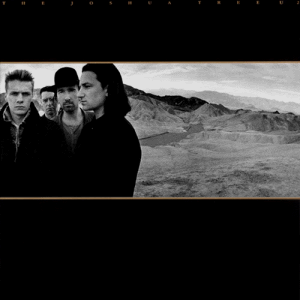Or, 'nailing vs. flailing'

We have a new album coming online on the 22nd. The songs are pretty diverse, so one of the hardest parts was getting the tracks in a coherent order. Let me show you what I learned while plumbing the mad depths of track sequencing and share what I think works (or doesn't) when putting your album in order.

These paper notes show my stupid state of mind when trying to nail the track listing, which was really more flailing than nailing. I came up with formulae (that's right, formulae) and 'calculated' as many conceivable good track listings as I could, based on a set of rules about what songs go better before and after each other.

This ‘paralysis by analysis’ was not only unnecessary, it was probably counterproductive. Think about that while you think about this: I was once in a band whose engineer nailed the track listing in an hour by smoking a joint and dragging the songs around in iTunes.

TEN SONGS
Artistic limits help, so as a rule, Farewell Horizontal puts 10 songs on each album.

So far, the overall shape of our albums is like:
Track 1 and 2 - something accessible, and something good but inaccessible (in no order)
Track 3 - change of pace, e.g. a slow song
Track 4 - a song, any song
Track 5 or 6 - “through the looking glass” - album reveals its weirdest side
Second half - not as good but hopefully almost as good
Track 10 - find the most appropriate conclusion for the album’s tone
I will go into more detail about these below.
ALBUMS VS COMPILATIONS

The difference between a considered track listing and any old order is the difference between an album and a compilation. However, some albums blur this line with some jarring, wacky sequencing, which is a key influence on Farewell Horizontal’s track listings. This includes The Beatles’ White Album and just about anything by Guided By Voices. This “mixtapeiness” makes me nostalgic for the cassettes my tweenage friends and I would exchange in the late nineties, rapidly made obsolete by the nowhere near as good mix CD. I do want album-like flow, but I want some of the ‘slapdash’ in there as well. Slapdash is easier to achieve, which takes some pressure off.
SIDE 1: BEWARE OF FRONTLOADING
Frontloading is when you put all your best songs near the beginning. You've got to save some of the best songs for later. The Soft Boys' "Underwater Moonlight" is a really good album but the opener "I Wanna Destroy You" is just way too good. The manic 3rd track, "Positive Vibrations", would have made a better choice. U2's "The Joshua Tree" is an album that, when I first heard it, I was shocked by its strength, but by track 4 I'd tuned out completely. Open with something strong, yes, but make sure there's plenty more where that came from. Otherwise, you’ve got a single with 9 B-sides.
SIDES / "ACT STRUCTURE":

It helps to think of your album as having two sides, whether you plan to put it on vinyl/cassette or not. For us that’s 5 songs per side. In each side, I want a mood-setting opener, a closer that brings resolution, and otherwise to simply distribute the album’s many moods evenly. For example, if we have 2 acoustic tracks, I’ll try and put 1 per side as did Nirvana on “Nevermind”.
Lately I’ve been working on a musical comedy screenplay/soundtrack which will probably never get made, and in the process I've read some books on film structure, which have given some unexpected guidance about album structure. Long story short, movies usually have 3 acts, being 25%, 50%, and 25% of the film's length. Act 1 sets up the movie's world, Act 2 has most of the battles of the film’s premise, and in Act 3 they tie up all the plot threads and bring it to a satisfying ending.
I realise this is pretty abstract, but think about opening tracks of albums you like and how they set up the album’s world. Most of Radiohead’s openers waste no time setting a unique mood, with lyrics that ask questions (2+2=5), pose riddles (Planet Telex), or declare their own rebirth (Airbag). All our album openers establish a musical mood immediately, with lyrics that hopefully will make you wonder where the hell we’re going with this.
TRACK ONE
Two myths about track 1:
1) It should be the best song.
2) It should be accessible and/or upbeat.
Regarding myth #1, that was basically covered in the bit about frontloading before. But let’s elaborate on how else you might open an album.
Royal Headache's self-titled album opens with "Never Again", a great track, but not as great as many others that follow. It is relatively unassuming and polite. Track 2, "Really In Love" is probably the best on the album, but would have been too gosh darned blistering to open with.
Brave choices of opener are great. The Strokes' upbeat album "Is This It" opens with the starkly subdued title track. I wanted an old band of mine to open our album with a slow and atmospheric track to set the mood, but our drummer (and my mum) convinced me we should swap it with a less good and more groovy/upbeat song… as if we were ever gonna fill dance floors with that stuff anyway. My stupid mistake: rule #1 of being an artist is never let anyone change your mind ever. I semi made up for it recently by opening this Zoom-recorded improv/joke album with a piano ballad.
TRACKS 1 AND 2:

A friend of mine who had a community radio show once told me that their music librarian would sort incoming albums into their appropriate section of their vast, vast record library by ‘express-listening’ to tracks, 2, 7 and 11 only. 11 doesn't apply here, and I don't think many people would go straight to track 7, so I guess what I’m saying here is that track 2 matters, perhaps just as much as track 1.
Track 1, taken alone, is just a song, but taken together with Track 2, it becomes a situation. A spatial relationship emerges between the two, with the gap hinting at the possible experiences that may follow throughout the album.
If you know which two songs are track 1 and 2, then you're well on the way to nailing the rest of it. These two are the most important. If people don't like these, they're not gonna hear the rest of it.
I aim for a radically different feel from track 1 to 2, so that the move from one to the other involves a change of scenery. It lets you know that a lot’s gonna happen.
I believe that tracks 1 and 2 should be, in either order:
- An accessible, upbeat song; and
- A great but polarising song with a lot of personality that may turn people off.
Ideally, both songs should be among the best. They will simultaneously give a warm welcome while also warning of strangeness to come which isn’t for everybody. This gives me artistic confidence, knowing that any ‘haters’ will have dropped out by the 4 minute mark, leaving only those who’ll really ‘get it’ with whom I can be real.
This new album of ours opens with the most accessible track, followed by a profoundly weird one (they were initially the other way around, but it didn’t work as well). Our first two albums opened with the weirder ones ("Mindstream Transference" and "Freud’s Shit Nephew") followed by the nicer ones ("Where Did All The Fun Go To Die" and "I Never Know What Time It Is"). I like to think that in all three albums, the track 1 and 2 combinations successfully tell the audience to expect the unexpected.
TRACK 3 - A CHANGE OF PACE
With only 10 songs, you don't have time to fuck around, so by the time we reach track 3, it’s variety time. Although we aim for variety between tracks 1 and 2, track 3 is a place for a more fundamental kind of variety - in tempo, genre or instrumentation. This is why it’s such a classic place to put a ballad (link Smiths “I Know It’s Over”). On our new album we went with the acoustic, reverb-drenched janglings of “Too Soon”. On other albums it was just a song that felt different in general. Basically, anything can happen at track 3, what’s important is that there actually is a shift in vibe.
As regards track 4, there’s not much to say except it can pretty much be anything. Sometimes, it turns out to be a better place for the aforementioned change of pace than track 3, in which case, swap their roles around.
THROUGH THE LOOKING GLASS - THE MIDPOINT:

By the midpoint, anyone still listening is presumably sold. Whip out the big guns. Get weird. In a movie, the midpoint is a scene or sequence where the stakes raise, tensions mount, cracks appear in what once was solid. Use this. Therefore track 5 should have some sense of something ending and track 6 something beginning (FH1 “Peter God”/“I Don’t Know Anymore”; FH2 “Decompose and Swim”/“Super Bravo”). This is a sacred part of the FH album track sequence: I want to make sure that the listener has heard our most extreme, left-field idea before they’re too deep into side 2. I want to assure the listener that we're not petering out. We're just getting STARTED. This new album has its starkest contrast between track 5, "Boring Dreams" (a 'drum machine Def Leppard ballad') and track 6, "Lt. Naughtyman" (a 'psychedelic thrash song') which gives side 1 a nice sombre conclusion while allowing side 2 to start with an explosion.
True to the ‘two sides’ structure, think of tracks 6/7 as having a similar effect as tracks 1/2.
SIDE 2: BEWARE OF BACKLOADING
Do NOT save your best songs for last. An old band of mine did this and it may have hurt people’s appreciation of our album. An extreme example: I bought an obscure power CD off eBay. It was a terrible album, but then three secret tracks came on - all of which were far superior, and in a more interesting style. What a horrible decision!
Another pitfall of backloading is the tendency to stash emotionally vulnerable material up the back, as if people won’t ‘see’ it back there. If you think showing vulnerability is bad, ask yourself if you’d love your favourite artists if they weren’t brave enough to reveal their human flaws. Do likewise and let us fall in love with you, too. Your most mushy, emotional side needs to reveal itself earlier than the last track.
Side two should not be better than side one. It should be nearly as good, but not quite. While you should never have filler material, I think once we’re into side 2 we’re past the point of demanding that the album constantly impress us, and we’ve committed to hearing the album out. Basically, we can relax now. Think of the 2/3rds mark on even the best Beatles albums: that’s where the duds go!

When choosing songs for side 2, consider their 'weight'. Some songs are too much too early, like getting up on a winter morning only to find dog shit everywhere. The darkest, most warped material will be easier to stomach once we're more acclimatised = side 2 material. Lighter songs, conversely, will feel inconsequential if they come too late = side 1 material. Balance the lighter and heavier songs against each other. For example, in FH3 side two we start with fast heavy punk-metal / breezy instrumental / vocal-heavy power pop song. Everything in moderation, a little bit of everything and not too much of anything. Etc.
THE LAST TRACK:
The two most overrated things about closing tracks:
1) They must be epic, long, slow-burns; and
2) They must be ballads, acoustic numbers, etc.
These are fine types of song to put there, but they're hardly the only types. At worst, it’s a cliché that we can all see coming, especially the token ‘acoustic last track’ on so many 90s albums.

The opposite of the mood-setting, question-asking opener is the last track with declarative, final lyrics, suggesting some great answer has been reached after the trials of the album. Our second album closes with "Doesn't Matter, No One Cares", which is very “The Final Thought”, with its heavy-handed ‘message’. Usually with such a track, the title says it all.
I enjoy a closing track that is like the last bite of a nice meal - you walk away satisfied, but not stuffed.
Bon appetit!












Comments